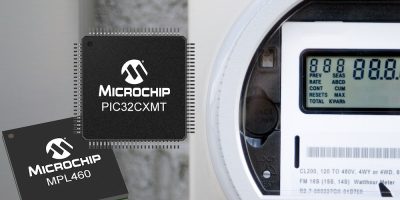Two RISC-V processors from SiFive bring flexibility and balance of performance and efficiency for wearables and smart consumer devices, said SiFive. The Performance P670 and P470 RISC-V processors address the need for high performance and efficiency in a small size in high volume applications like wearables, smart home, industrial automation, AR/VR, and other consumer devices, said the company.
The SiFive Performance P670 and P470 RISC-V processors are specifically designed for, and capable of handling the most demanding workloads for wearables and other advanced consumer applications, said SiFive. They “offer powerful performance and compute density for companies looking to upgrade from legacy ISAs,” said Chris Jones, vice president of product at SiFive. “We have optimised these new RISC-V Vector enabled products to deliver the performance and efficiency improvements the industry has long been asking for, and we are in evaluations with a number of top-tier customers,” he said.
Qualcomm is looking into the possibilities of integrating SiFive’s latest products into Snapdragon platforms,” revealed Ziad Asghar, vice president, product management at Snapdragon Technologies and Roadmap at Qualcomm.
Samsung’s System LSI Business is also looking to evaluate how the latest RISC-V innovations from SiFive can enhance its offerings, confirmed Jinpyo Park, vice president of the Innovative AP development team, at Samsung Electronics System LSI Business.
The SiFive Performance P470 and P670 products offer a combination of compute-density, power efficiency and robust feature sets. They offer support for virtualisation, including a separate IOMMU for accelerating virtualised device IO. It has full, out-of-order, RISC-V vector implementation, based on the ratified RISC-V Vector v1.0 specification.
It has enhanced scalability with fully coherent multi-core, multi-cluster, with support for up to 16 cores.
The P670 is suitable for applications such as premium wearables, networking, robotics, and mobile, said SiFive. The P650, which excludes the vector unit, is already shipping to lead customers and is being used in applications where space is constrained.
The P670 achieves a maximum frequency exceeding 3.4GHz in 5nm, and has performance of greater than 12 SpecINT2k6/GHz, offering optimised performance in a constrained area and power envelope. It also offers higher single threaded performance and twice the compute density compared to legacy solutions, claimed SiFive.
The SiFive Performance P470 is SiFive’s first efficiency-focused out-of-order, area optimised, vector processor, for wearables, consumer and smart home devices. Expanding on the P500-series, the P470 is significantly smaller than competing devices, claimed SiFive and optimised to what is claimed to have best-in-class performance efficiency and area density. The P470 was designed to also serve as a companion to the P670 processor for demanding applications that require a sharing of compute resources while optimising power consumption.
The P470 offers an upgrade to legacy efficiency cores, achieving a maximum frequency exceeding 3.4GHz in 5nm, and greater than 8 SpecINT2k6/GHz, within a minimal area and power envelope.
It also has a 4x compute density in comparison to the leading competitor, said SiFive and includes a 128-bit RISC-V Vector ALU compliant with the ratified RISC-V Vector v1.0 specification.
SiFive will also release the P450 – an area-optimized version of the P470 that excludes the vector unit.
http://www.SiFive.com







